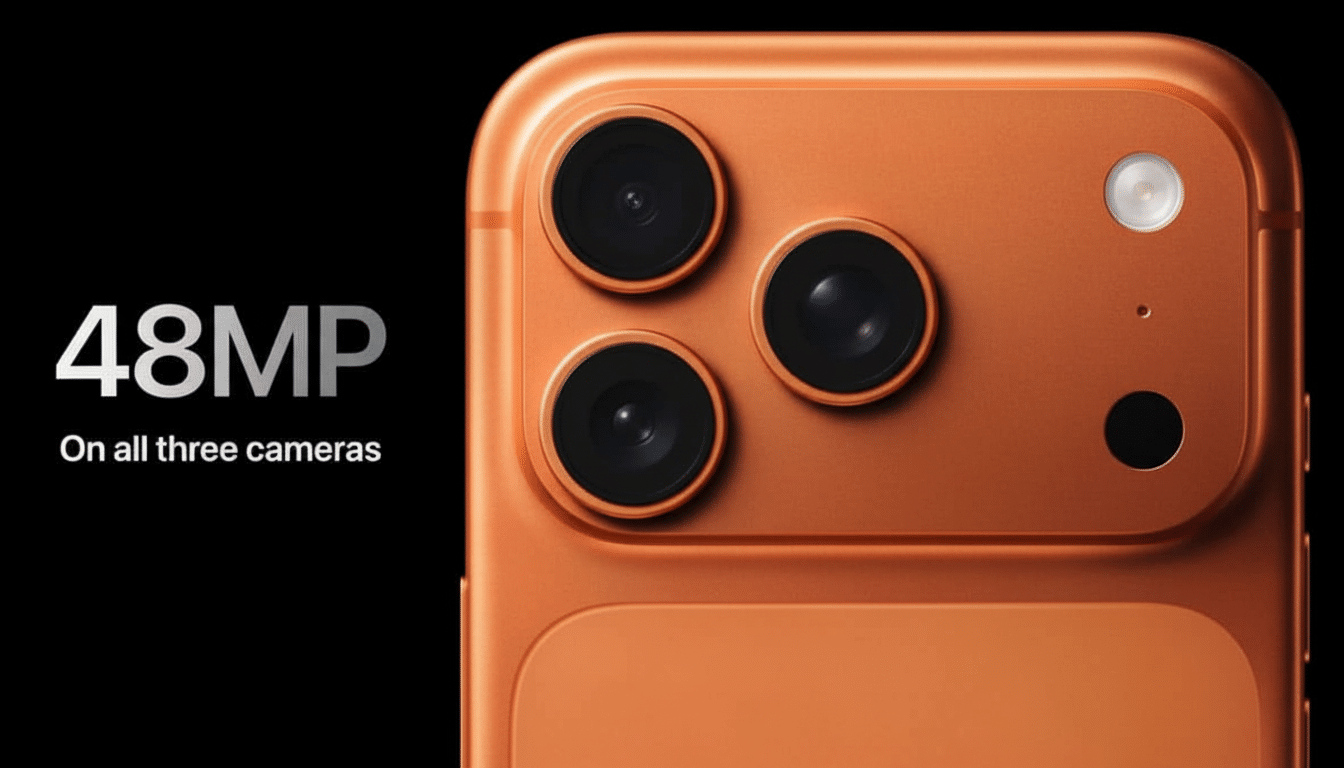Apple’s iPhone 17 Pro and 17 Pro Max mark the beginning of a new era for the Pro line, featuring a brand new unibody design that includes the largest batteries ever in an iPhone and a camera system centered on three 48-megapixel sensors. Powered by the A19 Pro, plus upgraded thermal architecture and a next‑gen wireless suite, these are flagships that set their sights on power users who demand desktop‑like speed, all‑day stamina, and serious imaging tools with no compromises.
New unibody design, same old sizes
Apple is announcing what it calls the first “iPhone Unibody,” a rigid aluminum housing that combines the structural elements for increased strength and internal space efficiency. Ceramic Shield now covers the front and the back, hinting at durability improvements without depending on bulk.

The footprint isn’t going to shock anyone stepping up from recent models: iPhone 17 Pro retains a 6.3‑inch screen, while the Pro Max balloons to 6.9 inches. The camera island goes camera “plateau,” a wide, sculpted shelf that accommodates larger sensors and optics while dispersing weight more evenly in the hand.
Bigger batteries, faster top‑ups
Apple doesn’t provide milliamp‑hours, but its spec sheet gives up to 33 hours of video playback for the iPhone 17 Pro and up to 39 hours for the Pro Max. That’s the most impressive endurance claim yet on an iPhone. In meaningful terms, it ought to mean that it’ll handle a long‑haul flight’s worth of offline video and still have headroom for some navigation or some photos on arrival.
Charging also gets a bump: Apple says you can get up to 50 percent charge with a high‑wattage USB‑C adapter in around 20 minutes. With bigger cells, more efficient A19 Pro and better heat dissipation, there should be fewer times when throttling kicks in for sustained processing tasks like 4K editing or gaming extended periods.
Triple 48MP, and longer reach
All three rear cameras have experienced a massive increase in sensor performance to 48 megapixels, opening up an array of new flexible cropping, multiframe fusion and detail cleaning in low light. The telephoto lets you take 12‑megapixel “optical‑quality” images at up to 8x, with digital zoom to 40x for those stadium‑seat or skyline shots. The flash is a bit more removed from the lenses this year, which is a small physical tweak that can cut down on glare but might alter the way you frame close‑ups.
At the front, an 18‑megapixel camera adds support for Center Stage video calls. And, just like recent iPhones, we would anticipate pixel binning (the way an image sensor such as this one can combine the data captured by a number of pixels to enhance light sensitivity) in order to improve low‑light performance — a technique that has invariably increased measured dynamic range elsewhere in the test bench world (posted by companies like DxOMark) up until now.

A19 Pro speed, cooler performance for longer
Apple refers to the A19 Pro as the fastest CPU in any smartphone, and the platform is combined with a new vapor chamber that draws heat away from important components. The aluminum frame isn’t just for show: Apple says it dissipates heat about 20 times more effectively than titanium, the metal in the predecessor. The result should be more consistent framerate in heavy titles and more extended runs of HDR capture before the device slows the clocks.
For creators, that means in the field. Now think 4K60 recording with stabilization on a scorching day, or batch processing RAW photos on the go — the kind of things that previous phones could heat up and slow down. The 17 Pro line is designed to handle those workflows with more thermal headroom.
Next‑gen wireless.
Less waste, more clockwise.
An Apple‑designed N1 wireless chip houses Wi‑Fi 7, Bluetooth, and Thread. The Wi‑Fi 7 standard from the Wi‑Fi Alliance (IEEE 802.11be) adds up to 320 MHz channels and multi‑link operation, capable of multi‑gigabit throughput with compliant routers—useful for your colossal iCloud backups or for streaming ProRes to a local workstation. Thread support reinforces smart‑home reliability as Matter adoption increases, a path that has the support of the Thread Group and major platform vendors.
Apple is also exchanging last year’s cases for a new TechWoven material that should be more impervious to scratches and stains. It’s a practical pivot after sustainability‑focused fabrics received mixed feedback on durability from reviewers and consumer groups.
Pricing and early outlook
The iPhone 17 Pro is priced from $1,099 and the Pro Max starts at $1,199, sticking to premium prices. Apple’s Pro edition has long made up the bulk of iPhone revenue, a trend that analysts at firms like Counterpoint Research say reflects what buyers prioritize: improved cameras and battery life. Featuring a refined chassis, a larger battery and a camera system that’s going all in with higher‑resolution sensors and long reach, the 17 Pro line doubles down on those priorities.
There are long-sought-after gains in endurance, imaging and thermal stability if you’re using an iPhone 14 or older, and they will feel significant. From the 16 Pro generation, the flagship features are the unibody build, vapor‑chamber cooling and triple‑48MP cam setup, real upgrades for gamers, travelers and creators who work their phones hard.

